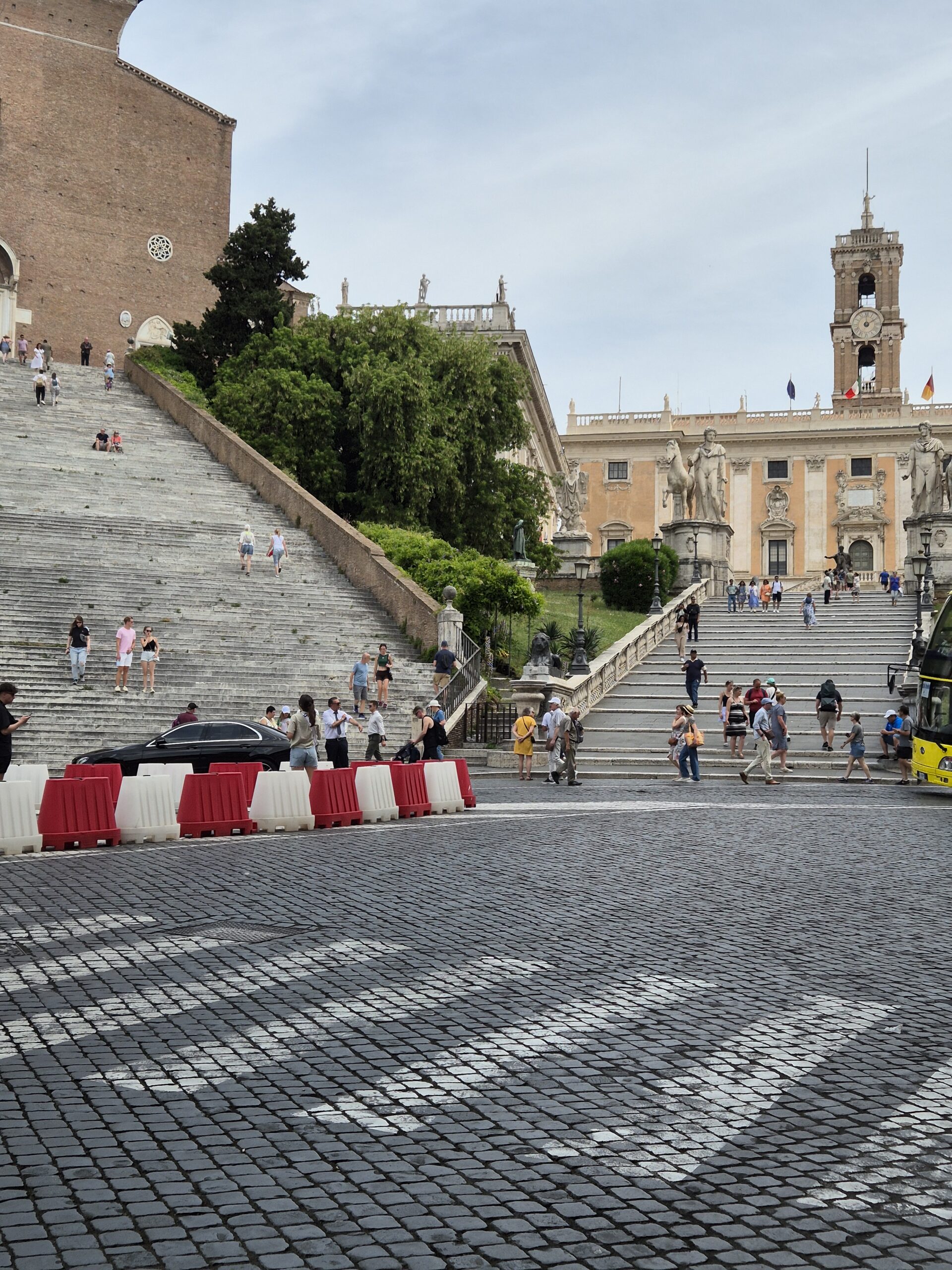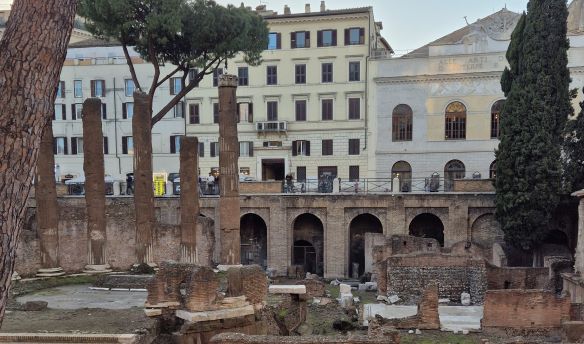In May 1944 the Allies finally broke through at Cassino and Rome’s citizens listened covertly to Radio Londra and Radio Bari, sure that the Allies would soon reach the capital. By the end of the month, the rumble of cannons was audible even in the centre.
On 3rd June, inhabitants of viali Margherita, Liegi and Parioli, and along il Corso and via Flaminia saw columns of German troops and armoured vehicles. They were leaving Rome, heading north.
That night, the senior members of the fascist hierarchy left.
Many gathered in via Veneto, where they joined the departing Germans, although others, identifiable as fascists but less senior, were left behind; either they were not told, or they received the news too late.
Meanwhile, partisans, who had been outside of Rome, began to make their way into the city.
Some encountered German troops but were not confronted by them. The individual German soldiers they met saw this as the start of their own return home.
Carlo Trabucco, one of the partisans, recounted how an exhausted German soldier spoke to him in a mixture of German, Italian and French:
“Mi andar ja… nach Firenze… Paris et après à ma maison.”
The first Allied troops in Rome arrived at dawn on 4th June.
They were specialists from the American 5th Army and their task was to take the bridges and disable any mines. In fact, unlike in other Italian cities, the German troops had left Rome’s bridges intact.
Other American troops arrived in the late afternoon, through Porta Maggiore and Porta San Giovanni.
Rome’s citizens returned home that evening, accustomed to a curfew but many hovered by their windows. They heard sporadic sounds of machine guns and then the rumble of engines.
Some ventured out and a group on via Veneto saw Allied armoured vehicles who asked the way to Ponte Milvio, apparently in pursuit of the Germans.
A short distance from via Veneto, an American tank halted on the corner of Barberini with Quattro Fontane.
Two young girls handed the soldiers an Italian flag, which they hoisted on the turret.
An Italian priest, padre Libero Raganella, could hardly believe the scenes in San Lorenzo (north-east Rome).
He saw an American jeep swamped by a crowd waving red flags and shouting “viva gli americani”.
The padre, amazed, kept asking – “Ma sono proprio americani?” (But are they really American?)
It was an important point in WWII: the first European capital to be taken from German occupation.
The next day, 5th June, the troops of the US 5th Army paraded through Rome. They were welcomed by the crowds, although not everything ran smoothly.
General Mark Clark lost his way and went to St Peter’s Square by mistake, rather than the Campidoglio. An American priest gave him the right directions and a boy with a bicycle accompanied him, shouting to clear the way.
General Clark’s jeep halted finally at the foot of the Cordonata, the stairway designed by Michelangelo that leads up to the Campidoglio. He climbed the Cordonata and crossed the Piazza to the Palazzo Senatorio, where he strode up the stairs and knocked on the door. To his embarrassment, the door remained closed and General Clark returned to the Piazza, greeting his officials and the media for an impromptu press conference.

The American cavalcade travelled through Piazza Venezia, past the Vittoriano.
The Piazza is currently undergoing major construction for a new metro line and a museum.
From the Piazza, General Clark’s jeep would have travelled down the via del Mare (now via Teatro Marcello) to the Cordonata.
This photo shows the road where Piazza Venezia leads downhill into via Teatro Marcello.
The Cordonata, on the right of the photo, is presided over by the statutes of Castor and Pollux. Piazza del Campidoglio is at the top.
The steeper stairs on the left lead to Santa Maria in Aracoeli, which sits between the Vittoriano and the Campidoglio.

Michelangelo designed the geometric paving in Piazza del Campidoglio and the façades of the buildings.
The equestrian statue of Marcus Aurelius in the Piazza was not present in 1944, as it had been stored during the war to avoid possible damage. The current statue is, in fact, a copy. The original, which has undergone extensive restoration, is housed in the Palazzo dei Conservatori.

The Palazzo Senatorio, with its dual staircase, is the central of the three buildings in the Piazza.
It was the renaissance seat of the city government.
On the right of the Piazza is the Palazzo dei Conservatori. It was built in the 15th century to house meetings of the magistrates, the Conservators, who governed with the Senators. Its façade was altered in 1568 by Giacomo della Porta, in accordance with Michelangelo’s design.


On the left of the photo is the Palazzo Nuovo, built in 1654 but faithful to the design of the older Palazzo dei Conservatori.
The two Palazzos house the collections of the Musei Capitolini.
The Piazza del Campidoglio was in existence before Michelangelo but his designs turned it to face the modern city rather than the Forum.





